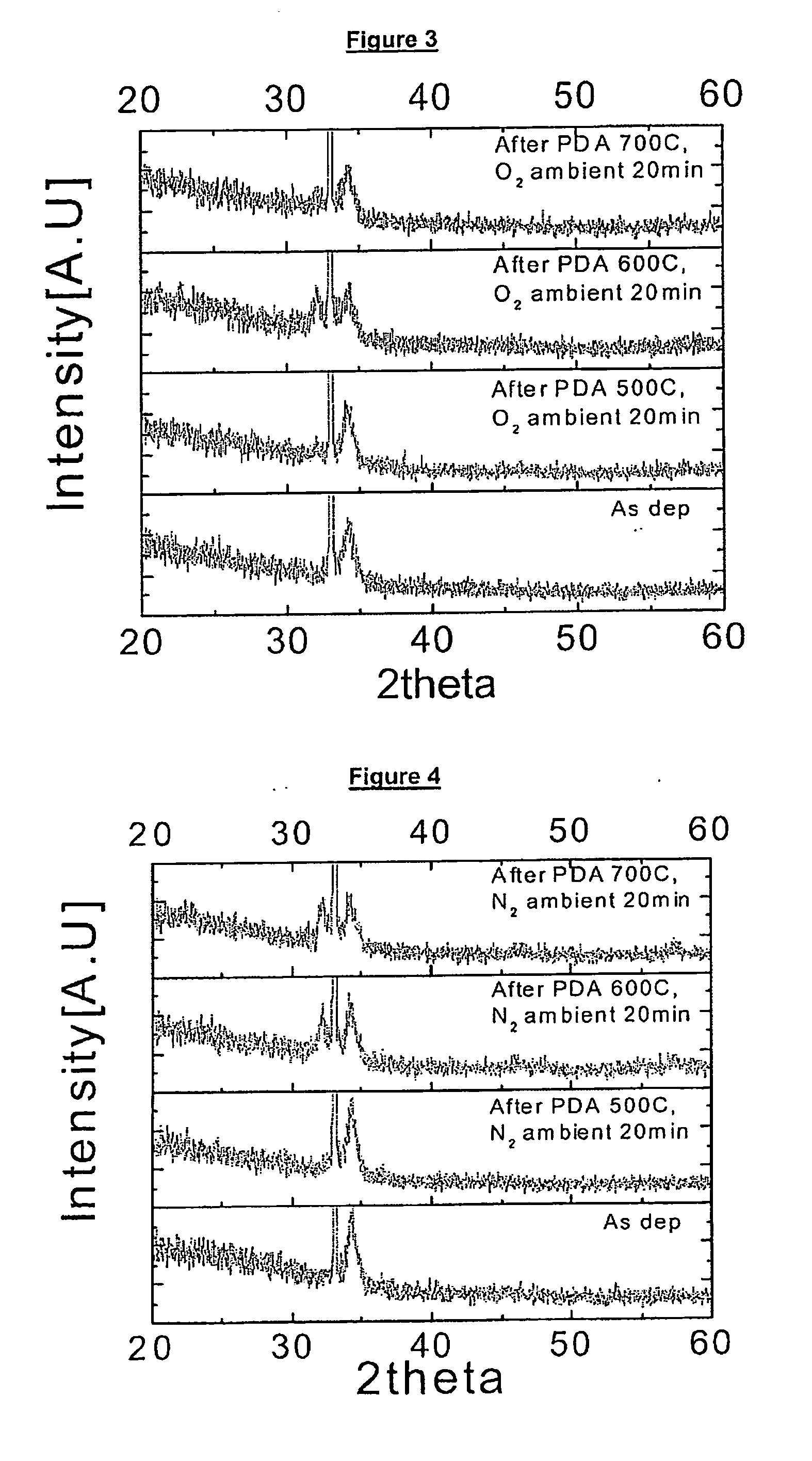Use of ruthenium tetroxide as a precursor and reactant for thin film depositions
a technology of ruthenium tetroxide and reactant, which is applied in the direction of coating, chemical vapor deposition coating, metallic material coating process, etc., can solve the problems of inability to allow deposition of films with a sufficient conformality, inability to tolerate the equilibrium between deposition and “etching” if ozone is used, and damage to the sub-layer of the plasma
- Summary
- Abstract
- Description
- Claims
- Application Information
AI Technical Summary
Benefits of technology
Problems solved by technology
Method used
Image
Examples
##ic example 1
Prophetic Example 1
Deposition of Ruthenium Films Using Ru(EtCp)2 and RuO4
[0091]A solvent blend of RuO4 may be prepared and stored in a canister dipped in a water bath kept at 3° C. to 5° C. Vapors may be introduced into the reactor by pulling vacuum, as the RuO4 vapor pressure is sufficiently high. Ru(EtCp)2 may be stored in a canister heated at 105° C., the temperature at which the molecule is liquid and at which the vapor pressure is sufficiently high. Vapors may be introduced into the reactor by bubbling, the lines being heated to 115° C.
[0092]The reactor may be a cold wall furnace having a volume of 4 L whose walls are heated at 115° C. to avoid condensation of the precursors. The deposition pressure may be set at about 66.7 Pa, for a total of 200 sccm (standard cubic centimeters per minute) of N2 flowing into the furnace.
[0093]Depositions may be performed on silicon and silicon oxide. Vapors of the precursors may be introduced into the reactor separately, separated by N2 purge...
example 2
Deposition of SrRuO3 Films Using Sr(iPr3Cp)2-THF and RuO4
[0096]A solvent blend of RuO4 was prepared and stored in a canister dipped in a water bath kept at a temperature of 3° C. to 5° C. Vapors were introduced into the reactor by pulling vacuum, as the vapor pressure of the RuO4 is sufficiently high. Sr(iPr3Cp)2-THF was stored in a canister heated at 105° C., the temperature at which the molecule is liquid. Vapors were introduced into the reactor by bubbling, the lines being heated at 115° C. Sr(iPr3Cp)2-THF was introduced at a rate of about 0.1 sccm (standard cubic centimeters per minute).
[0097]The reactor is a cold wall furnace having a volume of 4 L whose walls were heated to 115° C. to avoid condensation of the precursors. The deposition pressure was set at 66.7 Pa, for a total of 80 sccm of the carrier gas N2 flowing into the furnace.
[0098]Depositions were performed on silicon, silicon oxide, and ruthenium wafers. Vapors of the precursors were introduced into the reactor sepa...
PUM
| Property | Measurement | Unit |
|---|---|---|
| temperature | aaaaa | aaaaa |
| temperature | aaaaa | aaaaa |
| temperature | aaaaa | aaaaa |
Abstract
Description
Claims
Application Information
 Login to View More
Login to View More - R&D
- Intellectual Property
- Life Sciences
- Materials
- Tech Scout
- Unparalleled Data Quality
- Higher Quality Content
- 60% Fewer Hallucinations
Browse by: Latest US Patents, China's latest patents, Technical Efficacy Thesaurus, Application Domain, Technology Topic, Popular Technical Reports.
© 2025 PatSnap. All rights reserved.Legal|Privacy policy|Modern Slavery Act Transparency Statement|Sitemap|About US| Contact US: help@patsnap.com



